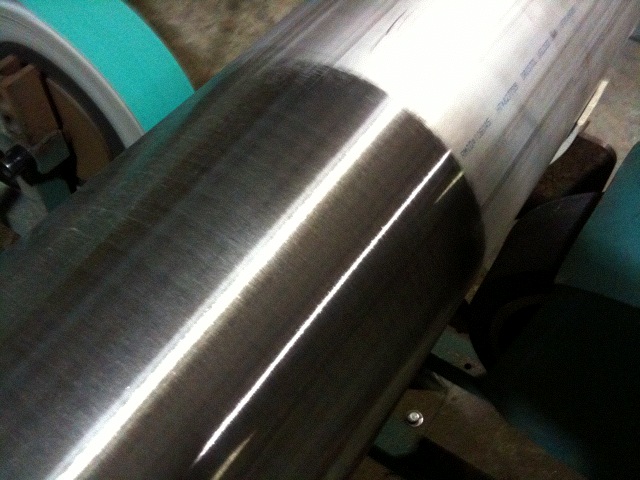1. Mechanical polishing
Mechanical polishing refers to polishing and batch polishing with polishing wheels, polishing belts, etc. Batch polishing is to use the abrasive in the polishing agent to polish the surface of the part to make the surface smooth and achieve polishing. After polishing, mirror brightness with surface roughness below 0.4um can be obtained.
Parts with simple shapes can be polished with hard polishing wheels or polishing belts, and parts with complex shapes can be polished with soft polishing wheels. Large batches of small parts are decorated in batches. Batch polishing also includes roller rolling, vibrating machine vibrating polishing, centrifuge centrifugal polishing and rotating polishing methods.
Mechanical polishing has a small amount of surface grinding, and it is difficult to polish rough surfaces. At this time, it is necessary to polish in advance, and use a polishing wheel and a polishing belt to dip the polishing paste for grinding, which is divided into rough grinding, medium grinding and fine grinding. After fine grinding, the surface roughness can reach 0.4um. In order to achieve some other requirements, such as descaling, deburring, welding slag removal, matting, etc., surface treatments such as sandblasting, shot peening and brushing with wire wheels are sometimes carried out. The surface polished with stainless steel wire wheels can be better Avoid iron contamination.
2. Chemical polishing
Chemical polishing is to immerse the parts in a suitable solution, because the solution dissolves the convex parts of the surface faster than the concave parts, so that the surface is leveled and the purpose of polishing is achieved. Generally speaking, chemical polishing has poor polishing ability and can only improve the brightness by a small amount. But it is labor-saving and time-saving than mechanical polishing, and it can polish the inner surface of small parts. Recently, it has also been reported that the surface of 18-8 type austenitic stainless steel can be polished to a mirror brightness by adding a brightener. But note the following:
① The active surface is produced after chemical polishing, and the workpiece must be passivated to ensure corrosion resistance.
② For large quantities of small parts such as brackets and screws, mechanical stirring should be used to make the polishing uniform.
③ When polishing large-area surfaces of stainless steel composite panels and other products, special attention should be paid to keeping the polished surface moist, and it should be fully washed after polishing to prevent uneven surface brightness.

3. Electrochemical Polishing
Electrochemical polishing can improve the reflective performance of parts, improve corrosion resistance, reduce the surface hardness of machined parts, and reduce the friction coefficient by reducing surface roughness. Electrochemical polishing can also be used to remove burrs, etc. Compared with mechanical polishing, electrochemical polishing has the following characteristics:
① Mechanical polishing will produce a surface hardened layer and abrasive inclusions, which reduce the corrosion resistance of stainless steel, while electrochemical polishing produces a passivated surface and increases the corrosion resistance of stainless steel.
② Electrochemical polishing has certain requirements on the substrate. For example, when the metallographic structure is uneven, an uneven polishing surface will be produced, and deep scratches cannot be polished flat. Mechanical polishing, on the other hand, has much lower requirements on the substrate.
③ For parts with complex shapes, wires, thin plates and small parts, it is much easier to use electrochemical polishing than mechanical polishing.
④ Electrochemical polishing has higher production efficiency than mechanical polishing, but large workpieces cannot be placed in the polishing tank and require a particularly large current, making it difficult to perform electrochemical polishing.
⑤ The surface current density of the electrochemically polished workpiece must be uniform, and a pictographic cathode should be used if necessary, otherwise the surface brightness will be uneven.
⑥ The current is relatively large during electrochemical polishing, and the fixture and the workpiece must have a large enough contact area and good contact, otherwise the local overheating will burn the workpiece.
⑦ Some polishing processes used for austenitic stainless steel cannot be used to polish martensitic stainless steel, which is prone to corrosion.